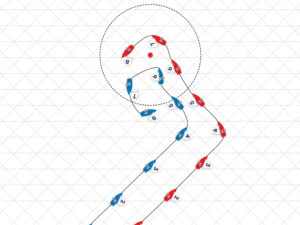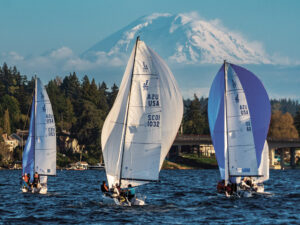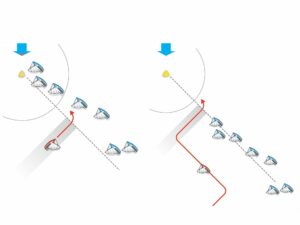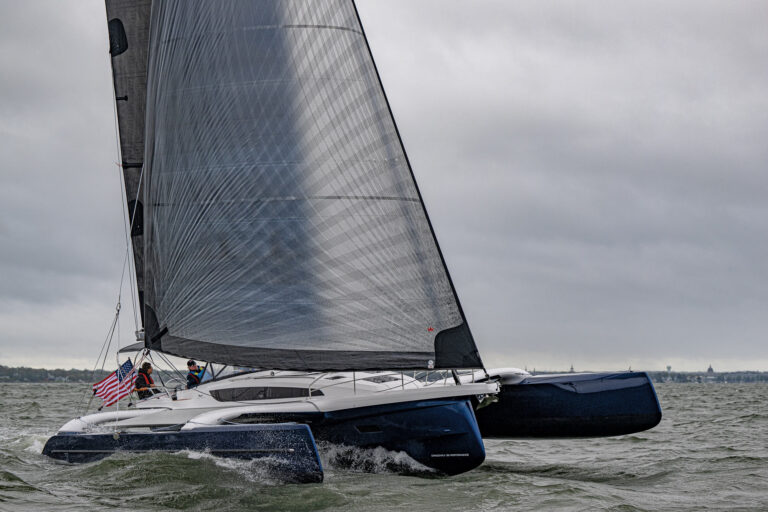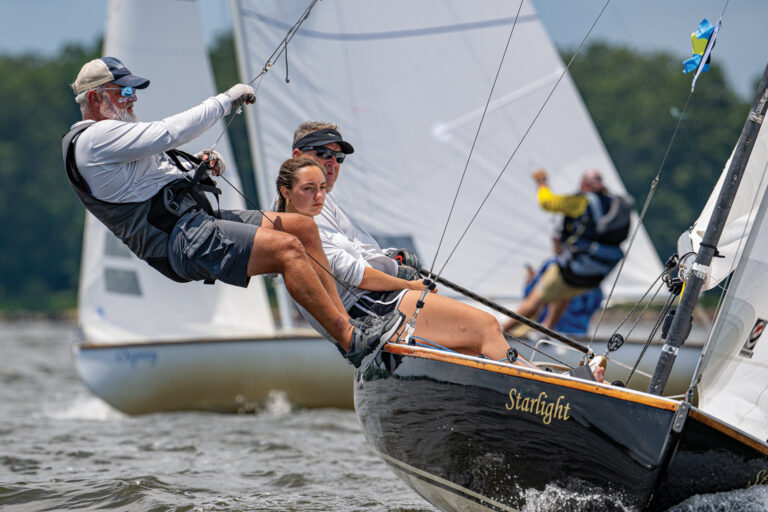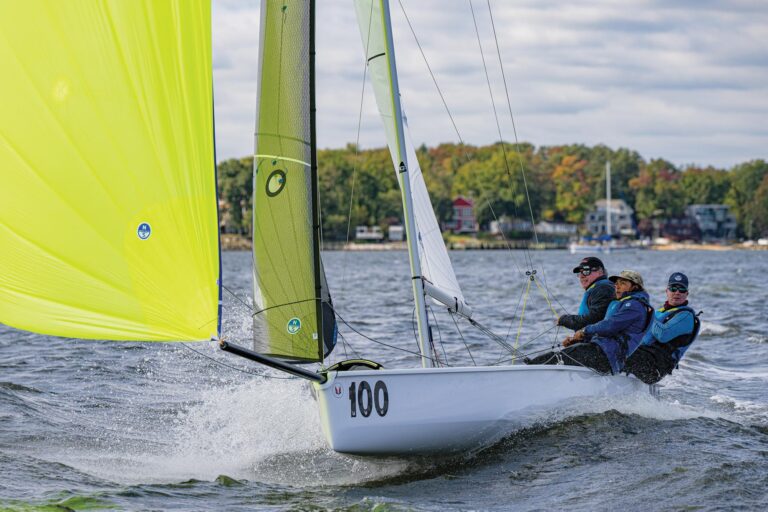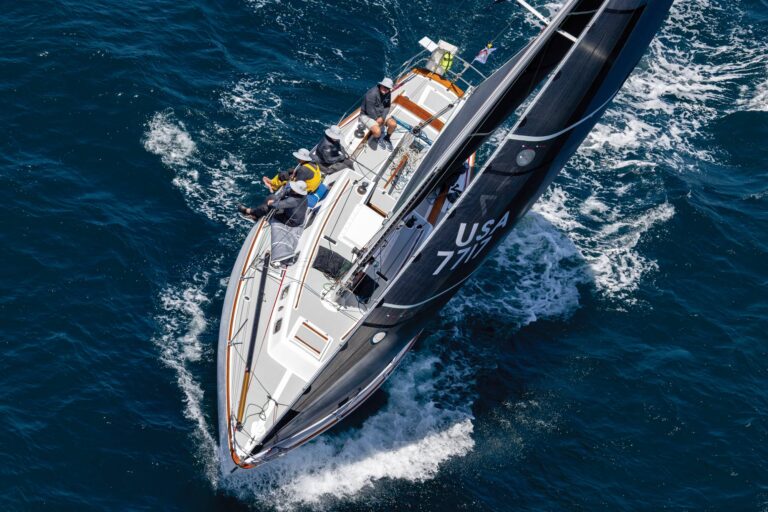
Bertrand
In the 1970s and into the early 1980s, Californian John Bertrand was one of a select group of talented young sailors who, collectively, turned the world of dinghy sailing on its head. Starting with Lasers and eventually moving on to Finns, the “Laser Generation,” as they’d been dubbed, perfected roll tacking and roll jibing, pushed the kinetics window to its limit, and, in the process, dominated the world of Laser and Finn sailing for close to a decade. For Bertrand, the zenith of his early career was a pair of successive Laser world titles, followed by similar success in the Finn and a silver medal in the 1984 Olympic Games. Then he disappeared from the dinghy scene. Now, three decades after he last set foot in a Laser, he’s back, and playing catch up with a faster generation.
You’ve made your living as a professional sailor, rolling up impressive big-boat credentials—setting some course records and even sailing as tactician in an America’s Cup for Dennis Connor. For the casual observer, suddenly picking up the Laser again might seem unusual; what got you back into it?
About a year ago January I got back into the boat as a kind of a reward. I got back down to my Laser weight. The two years prior to that, I had been involved with some Olympic sailors—I coached Brad Funk, and that whole time Brad kept saying, “You should get back into the class.” He was giving me a lot of encouragement, and I decided, “What the heck, I’ll just give it a try.” My son Alex had sailed Radials, and so I thought I’d jump in on a whim and do the 2009 Rolex Miami OCR. I thought I would be able to have some level of success, and I was quite humbled.
What did you discover?
The generation that has come up through the Optimist has generated techniques that have really advanced things. Even though I was in good shape, I wasn’t in any sort of sailing shape, so I suffered. I would get some pretty good starts, but I’d find myself in the second or third row within a minute or so of the start. In the first race, I was looking really good on the first beat, but on the run, the whole fleet passed me. The whole downwind technique is completely different, but I was just thrilled to be out there.
What downwind techniques is this new generation using?
The current vang and outhaul systems really open up a different technique, a lot of different styles. We used to set the vang, and that was it. That led to one style of sailing downwind. But now, on any particular run, you can have any one of maybe four or five different styles of sailing. You can sail by the lee, and the transition between what they call “regular flow” and sailing by the lee is now really critical. It all has to do with Rule 42 as well. One judge explained it to me as “legal rocking.” As long as you’re transitioning from by-the-lee to regular flow or the reverse, you can rock the boat to steer to do that. So it’s more sophisticated, it’s more complex. It’s fun trying to figure it out. But on the other hand, it’s frustrating sailing against the best guys in the world because they slice and dice you as they put you back on the horizon.
How does that compare to when you were their age?
It does remind me of a story. There were a group of us at St. Francis—Paul Cayard, myself, and some other guys who were sailing Lasers—and there was Carl Buchan and Craig Thomas and a group out of Seattle, and it was just getting to be spring, and someone called and said, “Let’s meet in Oregon at this really obscure lake and let’s go sailing.” And we all hopped in our cars, drove up there, and we camped out. There were no facilities. It was a remote lake. There was nobody on it. And we went out and raced each other. We had no buoys, no committee, nothing.
Apart from regattas such as the OCR, you’ve become active in the Laser Masters’ scene. Are you discovering you’re racing against some of the same people you raced against 30 years ago?
Yeah, it’s been really fun. I’d seen them around with their kids, as their kids came up through the Optimists and whatnot, so it was kind of nice to get out on the racecourse again with them. One in particular was Terry Neilson, who is a former Laser world champion. We were talking about that at the Masters Worlds in Nova Scotia [in 2009]. He and Andy Roy got boats, and their plan was to practice a couple times a week all year long and get ready for the Worlds. He laughed and said, “I think we got out like two or three times.” In one race in particular I was ahead of him, and it was windy, and he’s a little bigger than I am, a little taller. He was shouting at me, “Hey, you’ve been practicing!” As he’s giving me all this encouragement, he was overtaking me. Maybe some people think of the Masters as some kind of geriatric group of people, but you get to the Worlds, and these people are in shape, enthusiastic. It was really cool. I never realized how big of a scene it was.
**
Now that you’re back into Laser sailing, where do you see it taking you this time around?**
I’m interested in doing more big-boat sailing, and I’m interested in doing more coaching. But I also want to continue to train in the Laser, and my big plan this year is for the Laser Masters Worlds in England. Then, based on how much other work I’m able to bring in, that will determine how active the rest of my Laser campaigning will be.
**
You’ve also been actively working with aspiring Olympians, especially in the area of fundraising.**
I saw an opportunity this last quad to help a couple of sailors. Anna Tunnicliffe in particular was the one who kind of sparked the whole thing. I recognized how much help I got when I was doing an Olympic campaign and realized there was an opportunity for me to give back and honor the people who helped me be successful, so with Anna, I can tell the story. At one of the Laser Radial regattas, I noticed she had this massive sponsor sticker on her sail, and I was kind of excited to see she was getting some support. But when I quizzed her about it some more, I found out it really wasn’t any support that you would think. So I said to her, if you want help in that area, I’ve got some experience, and I’d love to help you. She agreed, and we set her up with a website, mentored her about how to increase her profile, helped her with some private fundraising, and we were able to help her with some corporate sponsorship. The ultimate goal was to take that burden away from her so she could just focus on her training and racing. Along the way, others popped up, and we ended up working with either five individuals or five teams who were campaigning for the Olympics—all American teams.

